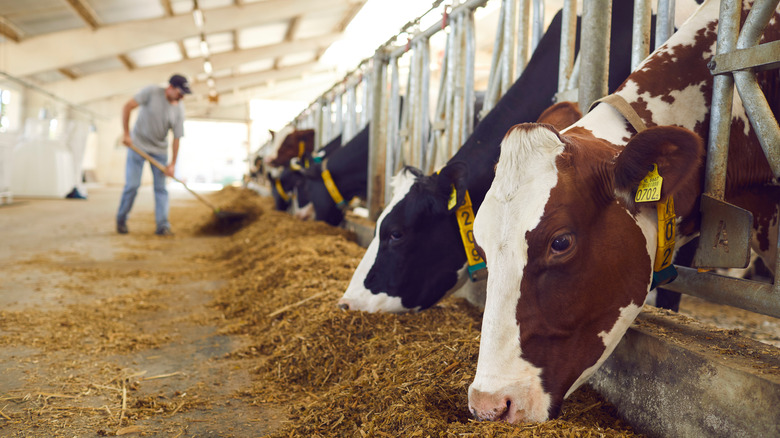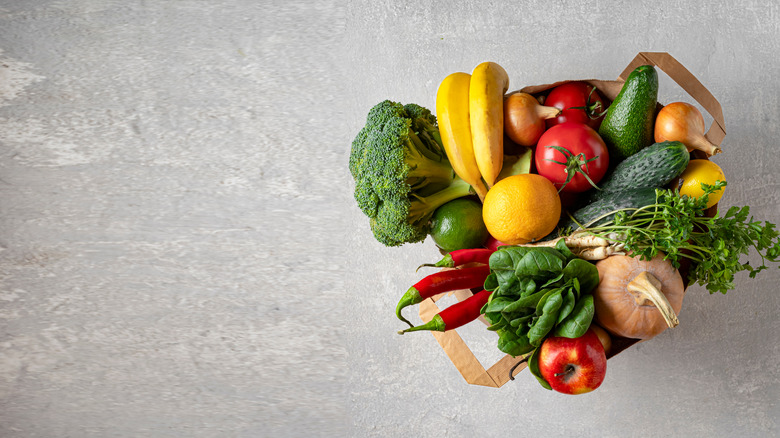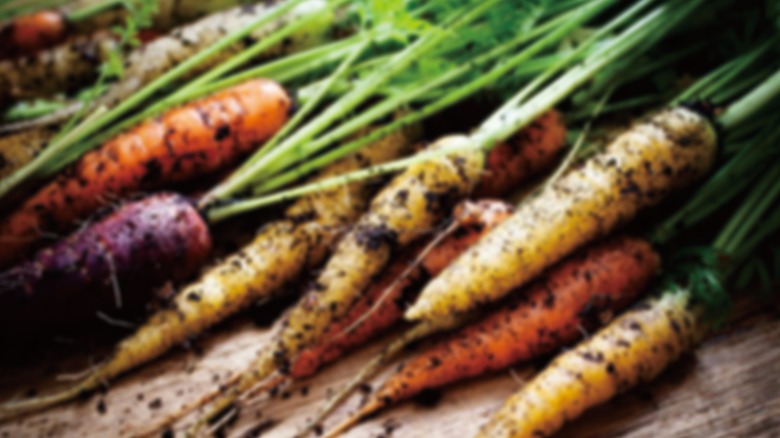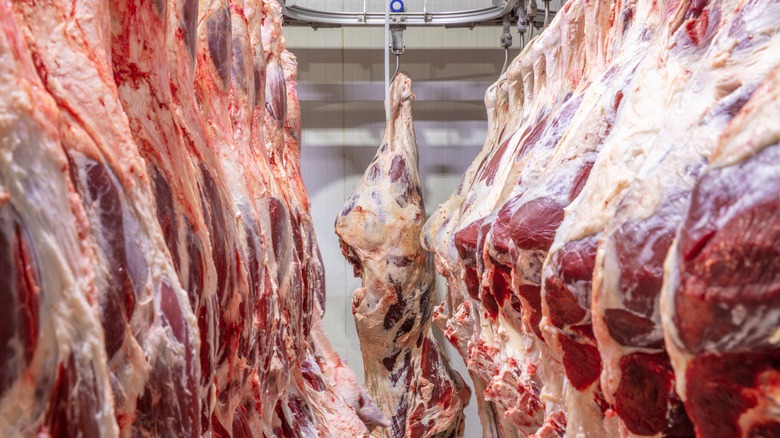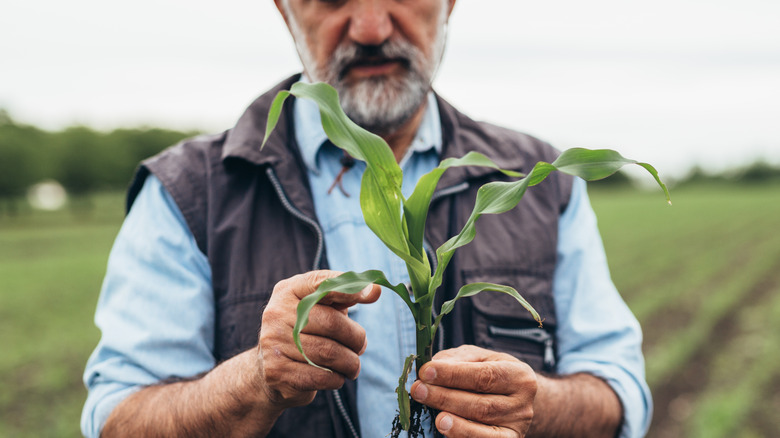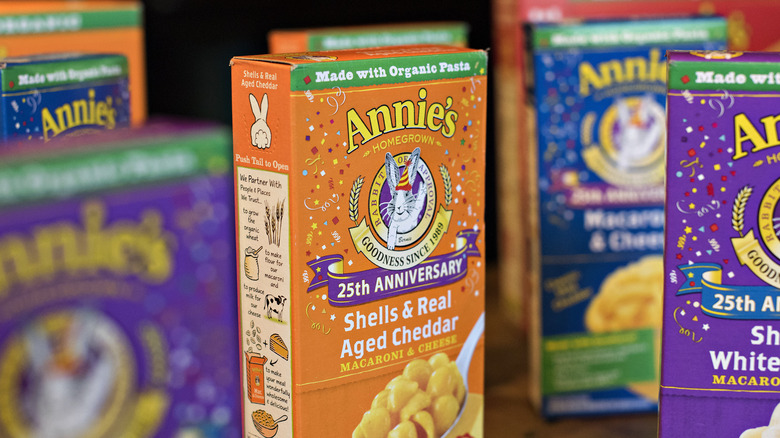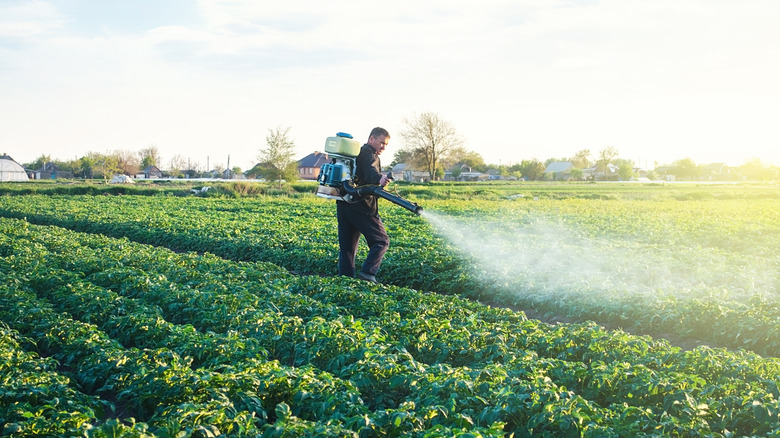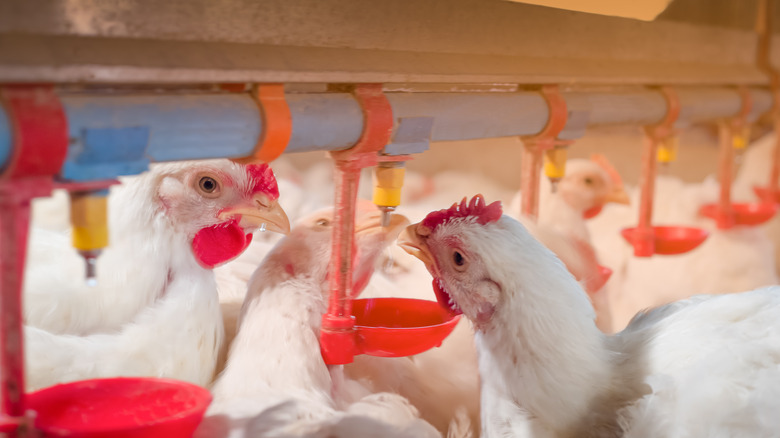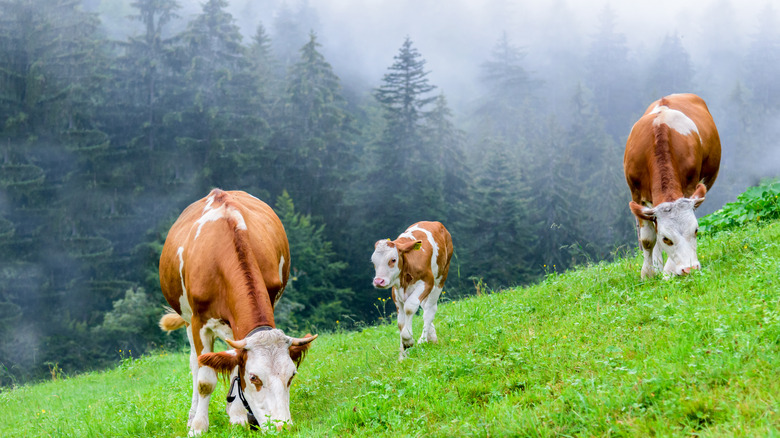11 Myths About Organic Food, Debunked
When you hear the word, "organic" you may envision pristine pastureland with grazing beef cattle or bright organic carrots being plucked from the ground still covered in rich, dark soil. You're probably not even thinking that the thousand-acre farm in rural Illinois with diesel-spewing combine harvesters and acres upon acres of soy could be considered organic. In short, organic is merely a certification administered by the United States' Department of Agriculture (USDA) — it's not the crunchy and ethical façade many consumers chalk it up to be.
It can be said that the popularity of organic foods is built on false perceptions. But, those perceptions translate to double-digit growth in the sector since the certification was created in 2002, according to the U.S. Department of Agriculture. ¾ of all conventional grocery stores in the United States now offer organic products — a statistic only expected to grow in the 21st century.
But what does an organic certification truly mean for agriculture — and what does it mean for the consumers? With reports suggesting that organic food is set to become more popular than ever, it's important to know what questions you should ask next time you consider buying these products. There are plenty of myths surrounding organic food, but not all of them are true.
Not all buzzwords are synonyms
The term "organic" refers to a prescriptive, federally regulated certification process for agricultural and food products. The USDA, which is the chief certifying agent at the federal level, prohibits the use of most synthetic (man-made) pesticides, additives, and fertilizers in organic products. Approved inputs are required to demonstrate minimal impacts on human health and the environment. Organic livestock operations are required to adhere to a set of husbandry practices that allow animals to "accommodate natural behaviors" and avoid the use of synthetic antibiotics or growth hormones. A product that has not adhered to the strict USDA standards cannot market itself as organic to consumers.
On the other hand, "sustainable," "eco-friendly," and "natural" are branded claims with no factual backing. While the Food and Drug Administration and the Federal Trade Commission work in conjunction when it comes to food advertising, there are plenty of workaround and grey areas to prevent state-sanctioned agencies from regulating the use of this language in marketing food products. Moreover, these claims are often thrown around with no proof that any sort of practice is adhered to. Food companies use bogus language to exploit the ignorance of consumers.
It's easy to get an organic certification, right?
The organic certification process is anything but easy (or cheap) for farmers. According to the USDA, farms seeking organic certification must complete a rigorous application and testing process even to be considered for inspection. Farmers must provide records of growing practices, pesticides, and contact with non-organic products. For farms with livestock, farmers must be able to provide records of organic feeds, vaccinations, and heath records for all the animals on the property. If organic certification is given, the farm must be re-inspected each year to ensure compliance.
The USDA's Agricultural Marketing Service notes that organic certification costs can range from a couple of hundred dollars to several thousand. Although the price may seem null compared to the revenue from a farm, it is important to consider that a farm must use organic-compliant feed, fertilizer, and pesticides for at least three years before its certification. Therefore, farmers will pay a premium for organic inputs much before being able to reap the benefits of certification.
Organic food is healthier than conventional food
According to pediatricians Dean Blumberg and Lena Rothstein at the University of California Davis Children's Hospital, organic foods do not contain more nutrients than conventionally grown foods. However, studies have shown that conventional foods have a higher exposure to synthetic pesticides and antibiotics — both of which have known impacts on human health.
Further, an article published in Current Developments in Nutrition details that exposure to pesticides through the intake of conventionally-grown fruits and vegetables is not a prominent cancer risk, despite well-documented occupational exposures for workers in the conventional produce business. As per the Genetic Literacy Project, there are also no known linkages between organic food consumption and autism.
The known impacts of pesticides on human health (as deemed significant by empirical research) include links to hyperactivity in children. Several studies in the Lancet (as cited by WebMD) note that youth with high levels of synthetic pesticides were more likely to be diagnosed with Attention Deficit Hyperactivity Disorder (ADHD). Four Seasons Pediatrics expresses caution with these studies, however, because there is not enough research in circulation about it. Children with ADHD may also exhibit behaviors that increase pesticide exposure, such as not washing fruit before eating or walking on lawns that have recently been sprayed with pesticides. What we do know is that eating organic lessens pesticide exposure — regardless of the extent.
One myth about organic food claims meat is more ethical
The answer to a question that asks if organic meat is more ethical than conventionally-raised meat would depend on your definition of "ethical." The USDA organic certification allots that livestock is raised in conditions that accommodate natural behaviors, fed organic feed, and not administered growth hormones or unnecessary antibiotics.
According to the American Society for the Prevention of Cruelty to Animal (ASPCA), the organic standard does not provide any requirement for outdoor access or space for confined animal operations. There is no clear guideline for how much space is given to each animal, nor is there a standard for the type of footing livestock stand on. Debeaking and tail docking are practices that are still allowed in organic operations. This ambiguity in the quality of life that organic meat animals face before slaughter (which is also not too far off from conventional animal slaughter) is obvious.
There has been some pressure on the government to improve the animal welfare standards for organic operations. In 2017, the USDA passed a rule titled the Organic Livestock and Poultry Production (OLPP) rule, which indicated specific standards for transport and slaughter of organic animals, access to the outdoors, indoor enrichment requirements, and pain control requirements. However, this ruling was derailed by large-scale organic operations and trade groups shortly after it was rolled out, with claims that it hampered the ability of these businesses to compete.
Organic food does not contain genetically modified ingredients
This myth is actually true! Besides providing proof that genetically modified (GM) ingredients have not come into contact with the food product at any stage in its life cycle, certifying agents may also test a potential organic product for cross-contamination.
According to the USDA, organic farms will also change growing practices to prevent cross contamination with neighboring farms or shared production equipment. Farmers may grow organic crops at a different time than farms with genetically modified crops to avoid cross-contamination. Additionally, farmers can also create buffer zones at the edge of organic fields to inhibit the spread of pollen from genetically modified plants. These buffer zones are grown with organic practices, such as limited use of synthetic herbicides and pesticides. Yet, the foods cannot be marketed as organic due to the risk of potential exposure.
There is no specific threshold for how much genetically modified product is permitted in an organic product. While farms that intentionally add genetically-modified products or prohibited substances to the growing regime may face loss of certifications and fines, the certifying agent will investigate the cause of exposure for inadvertent cases of exposure. Then, farmers will modify the organic plan to limit potential future exposure.
Food certified as organic must contain 100% organic ingredients
As if the organic label can get more confusing, there is a difference between "made with organic ingredients" and just plain "organic." There are three categories for the labeling of organic products. "100% organic" means the product contains all organic ingredients. "Organic" products must contain at least 95% organic ingredients; the other 5% can be conventionally grown. "Made with organic (insert ingredient)" identifies products made with at least 70% organic-sourced ingredients. The label can state which components were grown organically, but the product cannot advertise the certified organic seal.
Alcoholic beverages can be labeled organic as well. All alcohol is subject to regulations from the USDA and the Alcohol and Tobacco Trade Bureau. Wine containing sulfites is eligible for the "made with" standard, but not the use of the organic seal. Various sorts of classifications for vino production exist; there are many pesticide- or preservative-free types of natural wine, though there are reasons to be hesitant. An abundance of reasons exists for why you shouldn't drink clean wine, for example.
Curious about how your "organic products" match up to these standards? Products with the USDA organic seal have lower exposure to pesticides than conventionally grown products, per the National Pesticide Information Center.
No chemicals used in the making of this product
There are many types of pesticides and fertilizers still allowed in organic production. Neem oil, for example is a derivative of the neem tree and has been used as an effective, plant-based pesticide for centuries. Neem oil is accepted for organic production. Not all natural products are allowed in organic production though; tobacco dust and arsenic are prohibited according to the Rodale Institute.
There are some synthetics with known implications to human health that are still used in organic production. Copper sulfate is one such product. According to the National Pesticide Information Center, excess exposure to copper sulfate can cause eye irritation, nausea, vomiting, and damage to the liver and kidneys. Studies have also shown that the application of copper sulfate has caused damage to aquatic species.
So if copper sulfate poses these risks, why is it allowed in organic production? According to the Rodale Institute, it's because copper sulfate is really good at what it does. Producers can only use copper sulfate after all other options have been exhausted. The USDA oversees the quantity of copper sulfate that farmers can apply and where they can apply it across their fields and farms.
All organic farms are run by the little guy
Not all organic operations are the small-scale, farmer's market businesses that hippies dream about. According to Modern Farmer, the average size of an organic farm is 285 acres, while the average size for all farms is around 444 acres. "Small" farms are considered not by size, however. A small farm is defined this way if its revenue does not exceed $375,000 annually. "Large" farms bring in more than $1 million annually.
Small farms make up about 17% of all organic sales nationwide, meaning that the bulk of America's organic products come from massive organic farming companies like Cal-Organic. Trendy companies like Misfits Market have increased opportunities for organic companies to market farm products directly to consumers. According to the USDA, about 40% of all organic producers have done direct-to-consumer sales through farmer's markets, subscriptions, or farm stands.
Some efforts have encouraged more small-scale farms to produce organically grown foods. Farms that generate less than $5,000 in annual revenue are exempt from paying certification fees but must still adhere to the organic growing guidelines.
Organic farming is vastly different than it's dirtier cousin
According to the Cornell Chronicle, the commercialization of organic farming is a pertinent concern for researchers. An article published in Nature further suggests that larger-scale organic operations will adopt significantly less ecologically sustainable growing practices than small organic operations in favor of efficiency and profit. Large-scale organic farms were more likely to use permitted pesticides and herbicides rather than redesign the farming system to prioritize ecological structure and functioning natural systems. As a result, many organic production systems, especially those on a large scale, do not look very different than conventional operations. As climate change affects the U.S. food supply, organic farming may not be the fix-all we dreamed it would be.
Besides an emphasis on efficiency and profit, organic operations and conventional farming both share a common dependence on synthetic and man-made inputs. Diesel tractors to plow, irrigation systems to deliver water, and the need for human labor is shared by both conventional and organic operations. As a result, both conventional and organic operations face the same challenges in sourcing, purchasing, and operating.
Foods without a seal aren't sustainable
Though there is a difference between natural and organic foods, there is a farm doesn't need a certification to use ecologically sound and ethical production methods. Many conventional farms utilize rotational grazing, ecological restorative agriculture infrastructure, and natural pest control that don't end up applying for organic certification. Bread and Butter Farm in Shelburne, Vermont, is just one example of an operation exemplifying biodiverse farming for both livestock and produce. The farm relies on lush pastureland and organic feeds to sustain its grass-fed cattle, pigs, and poultry but has not sought organic certification for its meat operation. The Stuart Family Farm in Bridgewater, Connecticut, is accredited through the Animal Welfare Institute but has similarly not gone for organic certification.
There are numerous reasons why farms will not go through the organic certification, including costs, time, and consumer markets. Localized farms relying on farmer's markets to distribute food may not want to jump through the certification hoops if the consumer base doesn't explicitly desire it. As this process can be expensive, some may deem it unnecessary bureaucracy, especially if they already abide by sustainable practices.
Organic foods are much more expensive
Organic premiums are one of the most common reasons why farms decide to become certified organic. According to Produce Business, organic premiums result from input cost differences between organic and conventional operations. If organic operations cannot use synthetic fertilizers, the farmers may need to hire more labor to apply organic manure as a fertilizer. And, if a farmer needs to purchase land for an organic operation, the farmer may pay more for an area that has not been historically exposed to synthetic chemicals. To top it off, farms must spend more money to undergo inspections each year. The premium is one of the only ways that farmers can recuperate the investment into organic agriculture.
Premiums can vary based on availability and season. Lettuce has one of the largest average premiums at 10-20% more expensive than conventional lettuce. The erratic supply of produce has altered the stability of premiums for farmers, though. According to Produce Business, in January 2018, organic clementines, mangos, and romaine lettuce were priced 23-54% lower than conventional products. During the same week, organic navel oranges and red-skinned potatoes were either at the same price or up to 7% more expensive than conventionally grown products.
